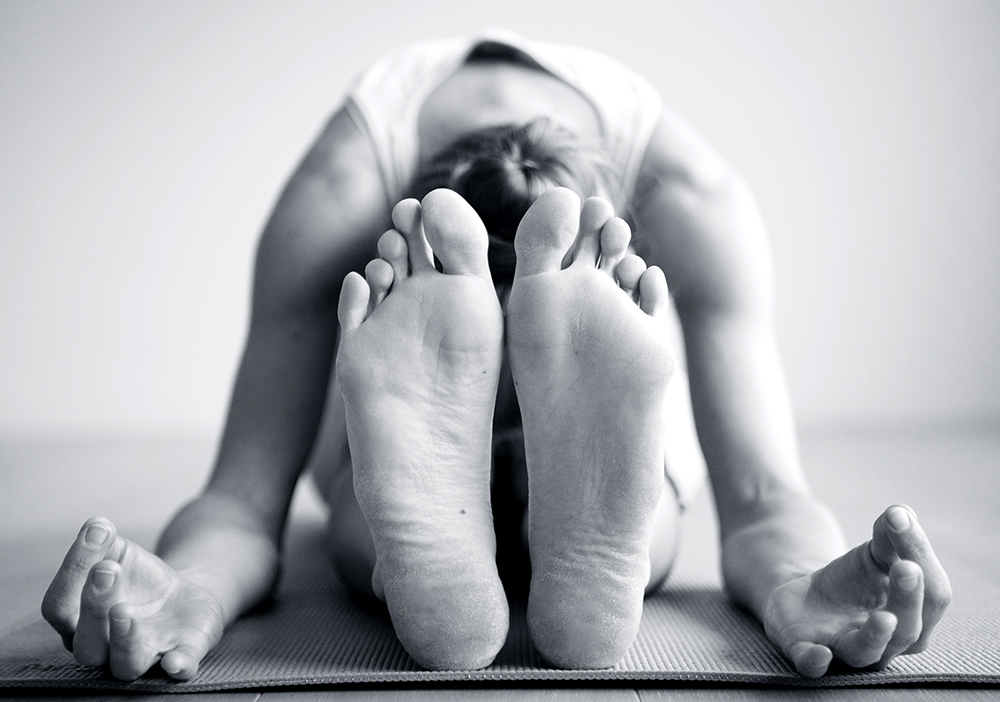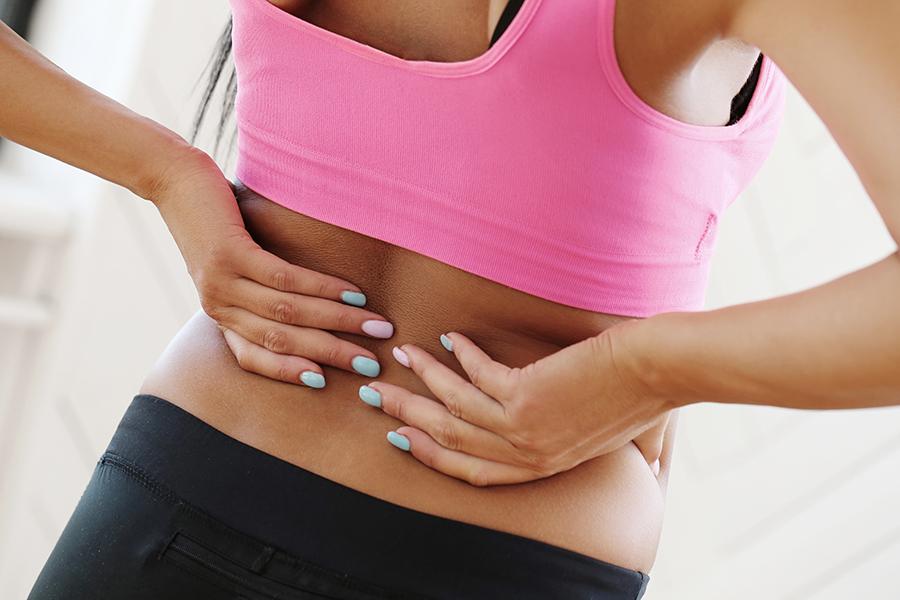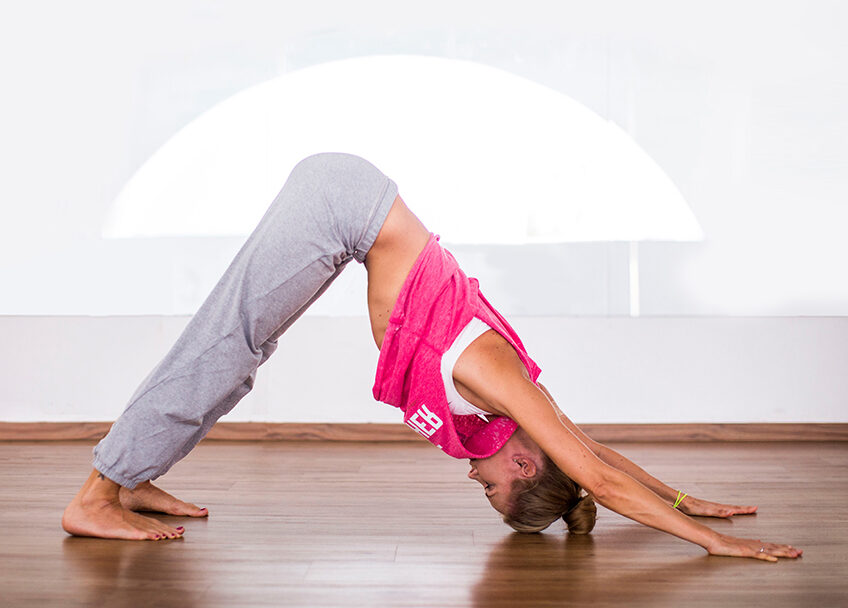What exactly is Yin Yoga?
Yin Yoga is a quieter and gentle practice, but not necessarily an easy yoga practice. Yin Yoga works deeply into our body by placing an emphasis on holding each posture for a long duration with the muscles relaxed. As opposed to dynamic practices such as Ashtanga, Vinyasa, and Power Yoga, which work hard on the muscular level, Yin Yoga targets the deep fascia and connective tissues surrounding the joints rather than the muscles themselves. Through muscular relaxation Yin Yoga stretches these tissues gently, helping to create more space between the joints and thereby improve joint mobility while cultivating flexibility in a safe and effective manner. Yin Yoga works the area from the navel to the knees, but the principles of Yin Yoga can be applied to all areas of the body. On an energetic level, Yin Yoga improves the energy flow and enhances the flow of qi in the organs.
Origins and History
Yin Yoga is based upon Taoist Yoga as practiced in China. Yin Yoga, as we know it today, was founded in the 1970s by martial arts expert and Taoist yoga teacher Paulie Zink. Yin style yoga has become popular due in large part to the widespread teaching activities of Yin Yoga teachers and developers Paul Grilley, Sarah Powers and Bernie Clark.
Philosophy and Principles
Yin Yoga is based on the Taoist concept of yin and yang – the opposite and complementary principles in nature. Yin is the stable, unmoving, hidden aspect of things while yang is the changing, moving, revealing aspect. Other yin-yang polarities include cold-hot, down-up, and calm-excited. In the human body, the relatively stiff connective tissues like tendons, ligaments, and fascia are yin, while the more mobile and pliable muscles and blood are yang.
Qi
Yin Yoga postures are also designed to improve the flow of qi – the subtle energy said in Chinese medicine to run through the meridian pathways of the body – in ourselves. Improved flow of qi is hypothesized to improve organ health, immunity and emotional well-being.
Characteristics of Yin Yoga
- it has a more meditative approach with a physical focus
- it emphasizes mostly on the lower limbs (area between knees and thoracic spine), but the principles of Yin Yoga can be applied to all areas of the body
- most postures are sitting, prone or lying on the back so the muscles can relax
- emphasis on holding each posture for a long duration of 2 to 5 min or more
- while holding poses the muscles of the body are relaxed especially in the target areas
- it targets the joints and connective tissue surrounding the joints and stretches the fascia and deep layer tissues
- the back is rounded while folding forward to stress the ligaments along the back of the spine
- in Yin Yoga we are applying acupressure by compressing tissues along the meridian lines in the body
- no special breathing techniques
Four main principles of Yin Yoga
- find an appropriate edge as you move slowly and gently into the pose, look for sensations in the target area and an appropriate amount of intensity
- remaining still without shifting position and consciously trying to release into the pose (there are two exceptions to this advice… first, move if you experience pain or if you are struggling to stay in the pose and the second exception is, move if the body has opened and is inviting you to go deeper)
- holding a pose for a time, start with holding for 1-3 minutes, then for 5-6 minutes or even longer
- release slowly and with care
Benefits of Yin Yoga
- increases mobility in the body, especially the joints and hips
- improves overall flexibility
- release of fascia throughout the body
- better lubrication and protection of joints
- regulates energy in the body
- calming and balancing for the mind and body
- deeper relaxation
- reduction of stress levels
- helps with TMJ and migraine
- great for coping with anxiety and stress
- improves ability to sit for meditation
- it balances your yang activities
Contraindications for Yin Yoga
Yin yoga is not recommended within two months after giving birth. The focus should be on poses which help new mothers regain strength and stability in the core abdominal, pelvic floor and back muscles.
During pregnancy, especially in the third trimester, be mindful while stretching and listen to your body. The body produces a hormone during pregnancy that softens the connective tissues. This can lead to higher risk of strains and pulls.
Yin Yoga is a perfect complement to the dynamic and muscular yang styles of yoga that emphasize internal heat, and the lengthening and contraction of our muscles as Yin Yoga generally targets the connective tissues of the hips, pelvis and lower spine.
My first Yin Yoga experience
In 2007 I had my first Yin Yoga experience at Y-Plus Yoga Center when I lived in Shanghai. At that time I was really into Hot Yoga and had just started practicing Vinyasa Flow. I was struggling with my stiffness, trying really hard to become more flexible, as one day a friend of mine asked me to join her for a Yin Yoga class. She told me that Yin Yoga is a quiet and simple practice, hanging out in passive floor poses, which are held over a longer period of time. This might sound easy, but in reality it’s far from it. I felt tension and also a bit of pain in some parts of my body while lingering in the poses. The teacher went on giving us sensible advice on how to find our edge, listen to our body and to let go of our monkey mind. He also integrated some science, psychology and spirituality keeping us entertained while we were ‘marinating’ in different hip-openers and heart opening postures. I struggled most of the time with being still, sitting with my feelings and intense sensations. But when I came out of a posture, I felt that even if I hadn’t ‘done anything’ or broken a sweat, some really deep work had been done. My hips had been stretched beyond their usual range, I experienced spaciousness in my heart space and my mind felt nourished and clear at the same time. After surviving this 90 min Yin Yoga class and finally lying in Savasana, a deeper part of me felt really calm. I experienced a rush of love towards myself and was happy to just be in this moment. I experienced true freedom in my whole body that I‘ve never felt before. From that time onwards I integrated Yin Yoga in my yoga practice. Years later in Germany I did my first Yin Yoga Teacher Training with Paul Grilley and another one with Josh Summers and many more Yin trainings followed after that.



